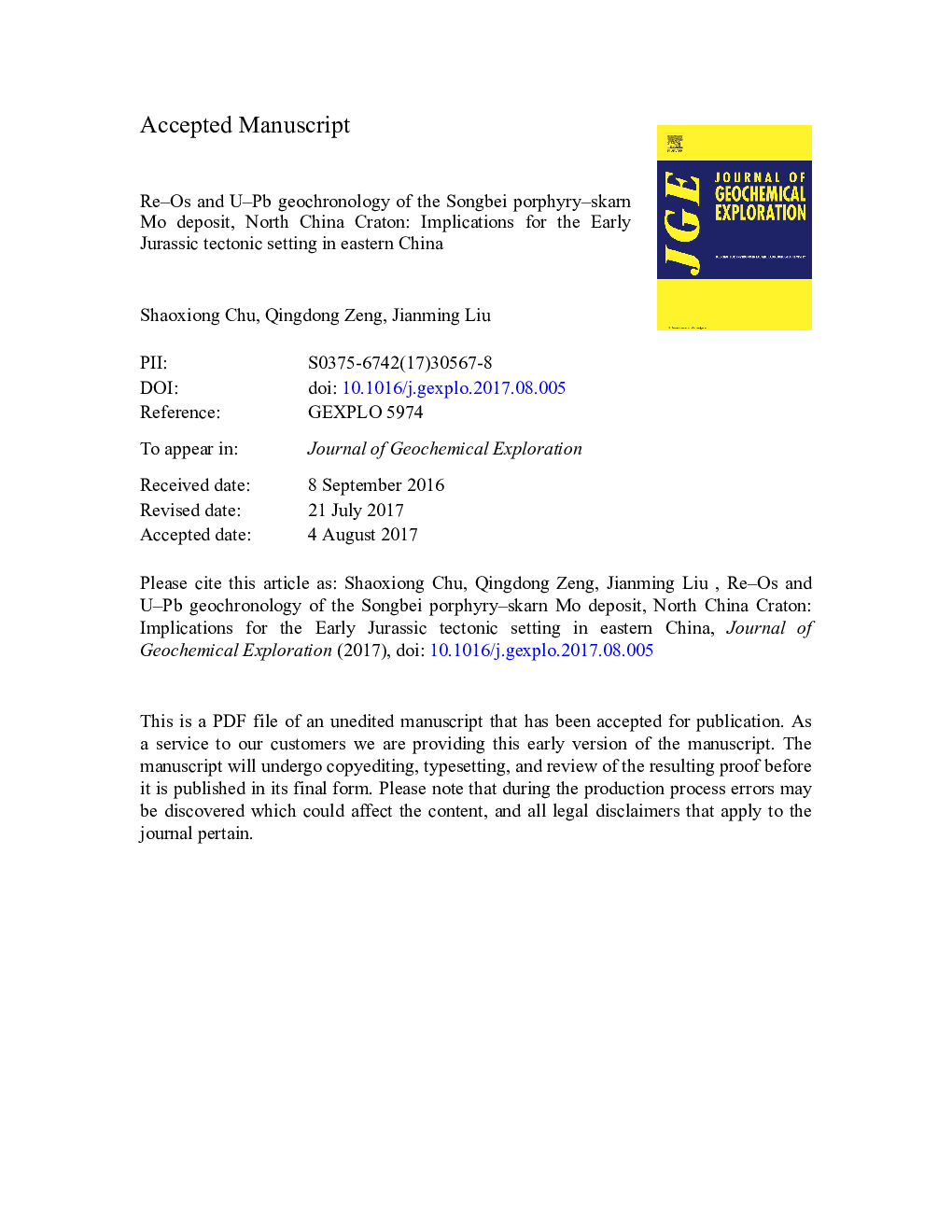| Article ID | Journal | Published Year | Pages | File Type |
|---|---|---|---|---|
| 5754542 | Journal of Geochemical Exploration | 2017 | 51 Pages |
Abstract
The Songbei porphyry-skarn Mo deposit is situated in the eastern part of the Yanshan-Liaoning Mo metallogenic belt on the northern margin of the North China Craton. The deposit is temporally and spatially associated with alkali-feldspar granitic porphyry. We present LA-ICP-MS zircon U-Pb and molybdenite Re-Os dating, whole-rock geochemistry, and in situ zircon Lu-Hf isotopic data for the ore-bearing porphyry, in an attempt to constrain its petrogenesis and geodynamic setting. The LA-ICP-MS zircon U-Pb dating shows that the Songbei alkali-feldspar granitic porphyry was emplaced in the Early Jurassic (184 ± 2.0 Ma). Molybdenite Re-Os dating indicates that the associated Mo mineralization was contemporaneous (183.2 ± 3.0 Ma) with the igneous intrusion. The alkali-feldspar granitic porphyry belongs to the high-K calc-alkaline to shoshonitic series. The porphyry shows affinities with highly fractionated I-type granites: i.e., it is silica rich, with high contents of alkalis, pronounced enrichment of light REE relative to heavy REE, and has significant negative Ba, Sr, P, Ti, and Eu anomalies. Zircon extracted from the alkali-feldspar granitic porphyry has εHf(t) values of â 10.0 to â 6.9 and crustal model ages (TDM2) ranging from 1657 to 1860 Ma. It is suggest that the alkali-feldspar granitic porphyry formed by partial melting of the ancient lower crust of North China Craton followed by extensive fractionally crystallization. Both the geochemical signatures and the spatial â temporal distribution of mineralization during the Early â Middle Jurassic in eastern China suggest that the Songbei porphyry-skarn Mo deposit was formed in a continental margin setting associated with westward subduction of the paleo-Pacific plate in the Early Jurassic.
Keywords
Related Topics
Physical Sciences and Engineering
Earth and Planetary Sciences
Economic Geology
Authors
Shaoxiong Chu, Qingdong Zeng, Jianming Liu,
